The quest for a Krüper’s Nuthatch is what stirs all the excitement. From early morning, we’ve been wandering through the pine forest at Mikri Limni, treading on a carpet of pine needles – but there’s no sign of the bird. We’ve chosen to come late in the season because summer is a tough season for birdwatching. Only the flamingos in the Kalloni Salt Pans and Mesot Lagoon remain indifferent to the changing seasons. These magnificent birds spend their entire day wading in the water, even under the scorching midday sun, with temperatures exceeding 30°C, perambulating serenely as if nothing could disturb them.
Elena Galinou, an environmental scientist at the Management Unit for Protected Areas in the Northeastern Aegean (part of the Organization for Natural Environment and Climate Change, or OFYPEKA), tells us that these flamingos are remarkably resilient to extreme temperatures. Whether it’s 0°C or 40°C, you’ll still find them out in the water fishing. This is a blessing for late-season birdwatchers like us and for those summer visitors who may not have come specifically for birdwatching but will still get to encounter various species.
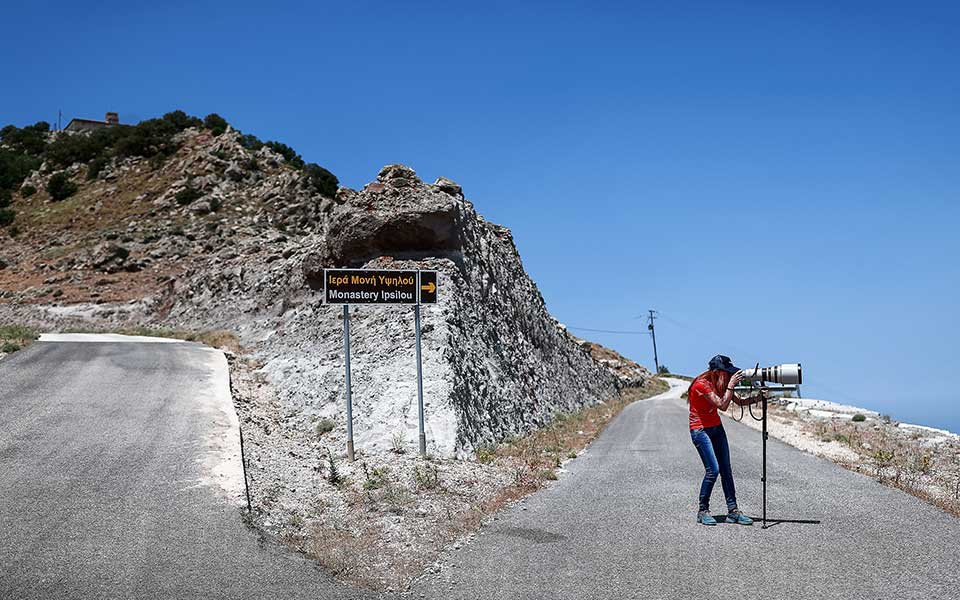
© Dimitris Tosidis
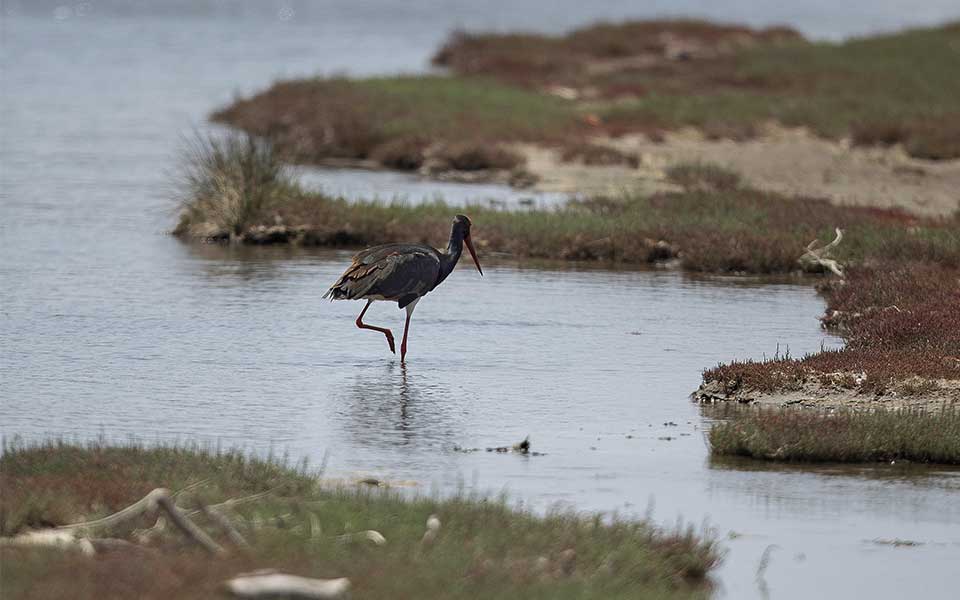
© Dimitris Tosidis
However, it’s in spring that Lesvos truly shines as a birdwatching hotspot, with around 200 migratory species passing through its ecosystems; 35 of these species nest on the island, too. Along with the birds come thousands of birdwatchers. This year alone, an estimated 12,000 visitors arrived on charter flights, primarily from the UK and the Netherlands, solely to witness the avian wonders of Lesvos. This is a privilege unique to this island, as no other in Greece can boast such biodiversity. Most Greek islands, because they’re smaller and have fewer distinct ecosystems, can’t host such a variety of wildlife or such large populations.
Lesvos has been well-known among birdwatchers since the 1990s. The first book detailing the island’s birds and their habitats was published in 1992 by an Englishwoman named Marjory Williams. The island’s rich birdlife is primarily due to its unique geographical position. Situated at the border between Europe and Asia and along bird migration routes, Lesvos is the only place in Europe where certain rare Asian species can be spotted. One of these is the elusive Krüper’s nuthatch, which, aside from Turkey, can only be found in Lesvos and sporadically in Georgia. Similarly, the range of the ferruginous duck, which extends from China to the islands of the Northeastern Aegean, includes Lesvos, as does that of the globally “near-threatened” cinereous bunting (Emberiza cineracea), found only on Lesvos (and sporadically on Chios), and in Turkey, Iran and Iraq.
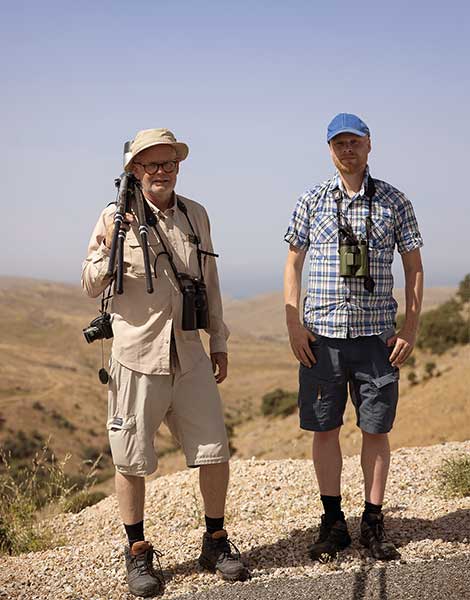
© Dimitris Tosidis
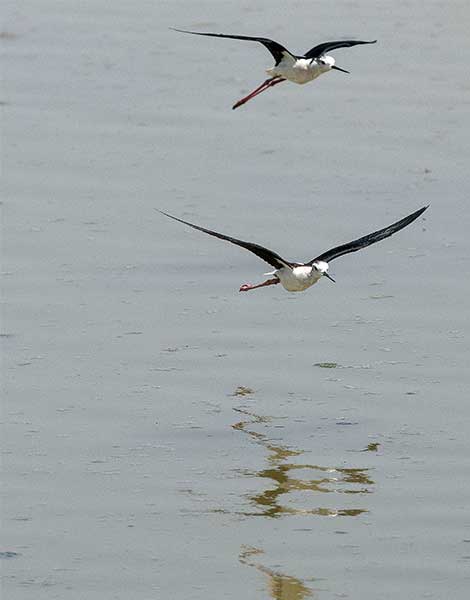
© Dimitris Tosidis
The island’s unique wildlife isn’t limited to birds. Lesvos is also home to the Persian squirrel, known locally as the “galia,” which exists nowhere else in Europe or Greece. The Asian tree frog and the Ottoman viper can also be found here, although they do appear in other parts of Eastern Greece as well.
“If you’re European and want to see these species, you either take a long trip or come to Lesvos – it’s that simple,” explains Galinou. “But the island’s location doesn’t just favor the presence of Asian species; it also attracts migratory birds, as we sit directly on the Africa-Europe migration corridor. Large birds, especially those coming down from the Bosporus, prefer to avoid flying over open seas and therefore stick to the coasts. Turkey’s shores are heavily developed, so they prefer us.”
However, it’s not just the island’s low population density that draws the birds. Lesvos, Greece’s third-largest island, offers a wide variety of habitats, each distinct from the other. When you consider the stark contrast between the forested eastern region and the barren, volcanic western landscape, the range of ecosystems becomes clear. This diversity is what has led to the recording of around 330 bird species on Lesvos, out of the approximately 450 species found in Greece.
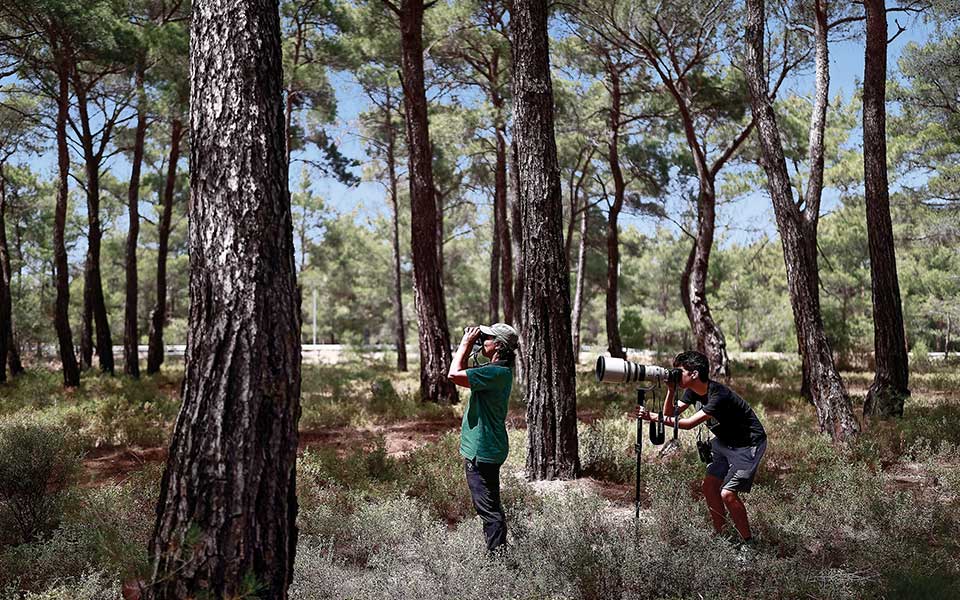
© Dimitris Tosidis
A Variety of Habitats
From olive groves, pine forests and chestnut woods in the east to the rugged cliffs, rocky terrains, shrublands, sparse oak forests and unexpected ravines in the west, and from the pastures and maquis vegetation in the north to the island’s coastal wetlands formed by seasonal streams, Lesvos boasts an impressive array of habitats for wildlife. It is home to 84 wetlands (more than any other Aegean island except Crete), with 25 of these located in the Gulf of Kalloni. This area is, not coincidentally, also where five birdwatching observatories have been set up, three of which are in the Kalloni Salt Pans, the island’s most important wetland. The Environmental Information Center at Skala Kallonis, which operates under the direction of the Natural History Museum of the Lesvos Petrified Forest, offers visitors birdwatching tours and equips them with binoculars and telescopes. The Northeastern Aegean Management Unit, based in Mytilene, organizes similar activities.
“Beyond attracting visitors, we are particularly focused on raising awareness among the local community, especially residents and schools. Only in this way can the wetlands be preserved, which is why we also organize public activities during the winter,” says Dr. Nikos Zouros, director of the Natural History Museum.
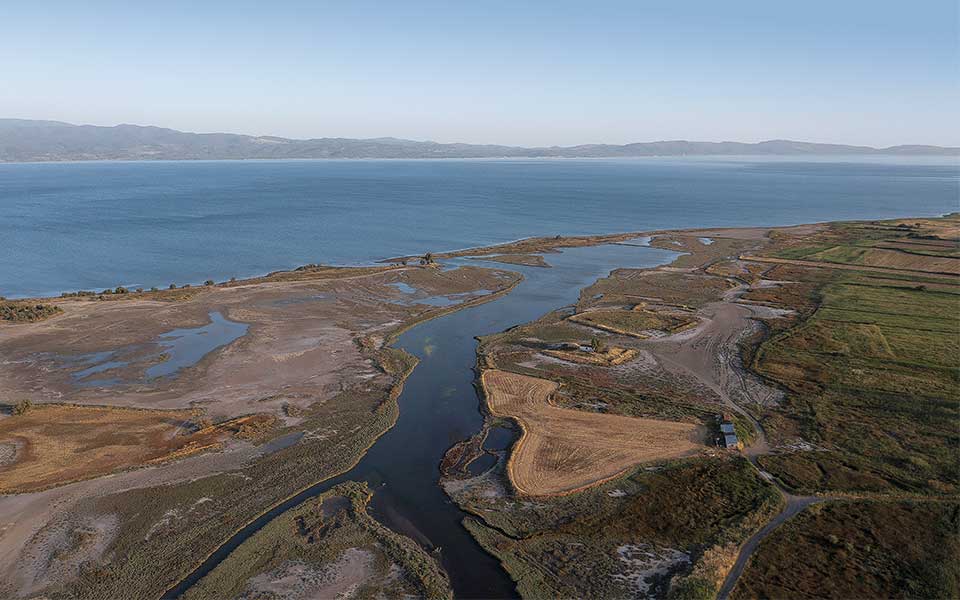
© Dimitris Tosidis
In addition to organized groups, many birdwatchers roam the island on their own. We encounter two Swedish birdwatchers who’ve set up their watch at the base of the hill near Ypsilou Monastery, peering through their binoculars for a sight of the rare cinereous bunting. As they watch, birds of prey soar above us. In the volcanic, barren western part of Lesvos, migratory birds are drawn to green pastures and other verdant patches, welcoming corridors fed by streams. Warblers, flycatchers, yellow wagtails, and birds of prey make this area the island’s second most significant gathering point for birdlife.
Foreign birdwatchers appreciate the easy accessibility of all the birdwatching sites. As the Swedes, who visit nearly every year, tell us, when you add in the tranquil traditional villages and the good wholesome food, the island becomes an ideal destination for nature lovers. It’s also notable for its reptiles and butterflies, and for its unique flora, including wild orchids and the rare yellow rhododendron. “The British in particular are impressed even by the common species that appear here in large numbers,” notes Galinou. “For example, the last two pairs of Montagu’s harriers in England bred there three years ago, whereas here, during migration, you can see dozens in a single day. Our nature remains untouched.”
The masked shrike, which lives largely in the Middle East and is only sparsely present in northern Greece; the Cretzschmar’s bunting, found only in Greece and Turkey; and the Isabelline wheatear, a species native to eastern Greece and Asia: all these nest in Lesvos each spring, contributing to the island’s biodiversity. That diversity is further enhanced by the breeding birds of prey, such as the long-legged buzzard, the lesser kestrel, the Eleonora’s falcon, and the short-toed snake eagle. We spot one of these eagles diving to catch its prey above the petrified forest of Sigri. Though we don’t see any Asian bird species, perhaps due to the season, one evening near the desolate areas around the Gulf of Kalloni, a Persian squirrel makes a spectacular appearance in front of our car. It gives us a quick glance before darting off, no doubt to find that elusive Krüper’s nuthatch somewhere along the border between the pine forest and the olive groves.












